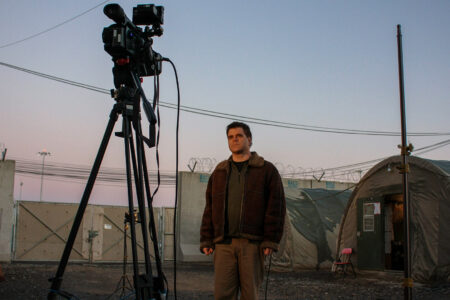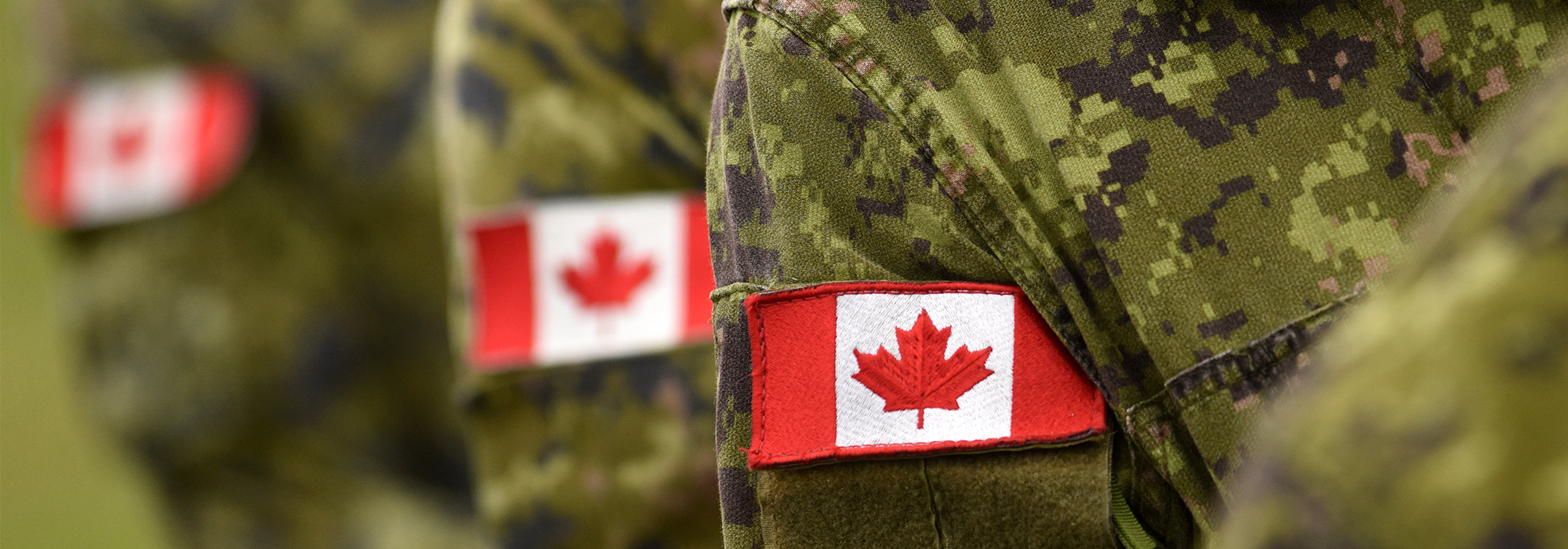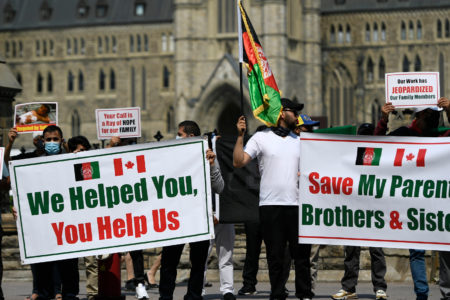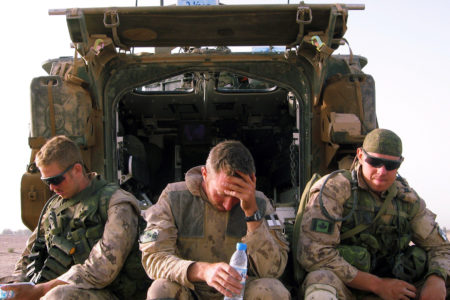
In early 1964 the recently appointed minister of national defence, Paul Hellyer, told his officials that he was determined to base the Liberal government’s defence policy on a uniquely Canadian national defence strategy. Experienced advisers thought the young minister was simply misguided: “It would be,” they warned, “highly advantageous to discover a strategic rationale which would impart to Canada’s defence programs a wholly Canadian character. Unfortunately, such a rationale does not exist and one cannot be invented.” They were mistaken.
More than half a century earlier, Sir Wilfrid Laurier had identified the rationale and the truly Canadian character of the country’s national defence strategy. In 1910 the Prime Minister cautioned his professional British military commander, Lord Dundonald: “You must not take the militia seriously, for though it is useful for suppressing internal disturbances, it will not be required for the defence of the country, as the Monroe doctrine protects us from enemy aggression.” Few prime ministers have been as outspoken, yet all have held (unknowingly, one suspects) to what might be called the “Laurier Doctrine” because its fundamental logic frees them from the bother and expense of building for Canada a traditional armed force dedicated as a first priority to the defence of the country.
Of course, every White Paper on national defence identifies the defence of Canada as its first priority. These statements, given the continuing soundness of the Laurier Doctrine, are mostly just necessary political rhetoric. Being free from threats and under the assured protection of the United States — most certainly an
American policy maintained in the interests of the United States — allows Canadian governments enormous opportunities to develop whatever military capabilities they think appropriate in the circumstances. Appropriate-in-the-circumstances policies, however, often produce very skinny armed forces indeed.
Occasionally, prime ministers — Diefenbaker, Trudeau and Chrétien — headed off into independent defence strategy territories only to withdraw from them when the utility of such ventures evaporated and/or their true costs became burdensome. Prime Minister Jean Chrétien’s defence policy choices, on the other hand, were reminiscent of the Laurier tradition. There was no ambiguity in Chrétien’s defence policy. He seemed to recognize implicitly that the military defence of Canada was a low-rung necessity and he opposed from the beginning to the end of his term in office demands that he maintain capable Canadian Forces.
As he wrote in his memoir, My Years as Prime Minister: Whether for national security or economic growth, every government is under constant pressure to spend more and more on defence. In our case the pressure came from the American government…as well as from the arms manufacturers and military lobbyists for whom no amount of money is ever enough. The Canadian Forces always claimed it needed more…but I wasn’t sure that its self-interest was the same as the national interest.
Paul Martin tried to distance himself from Chrétien’s national defence policies and clearly intended to rebuild Canada’s foreign and defence capabilities to give Canada a “place of pride and influence in the world.” It was, however, too late to hold back the Conservative campaign that promised to actually rebuild the Canadian Forces and to deploy them on missions that Prime Minister Harper thought would serve Canada’s national interests.
Indeed, the Harper government set off immediately to overthrow the Chrétien legacy and the Laurier Doctrine with promises to provide Canada with a revitalized national defence establishment built on the ideas that there were threats to Canada’s national interests and that Canada had to respond to them with its own credible military capabilities. The government’s Canada First Defence Strategy and its immediate commitment to acquire major war-fighting and other support capabilities were impressive in scope and, for Canadians, breathtaking in implementation — at least until 2009.
As Canada enters today a period of foreign and defence commitment and budgetary retrenchment, where are the politics of defence policy taking the Conservative government and the Liberal opposition? Will it be new policies standing in Laurier’s shoes or policies to build capabilities that would make Canada a world player and independent defender of our “true north strong and free”?
The Conservative government has been showing signs of commitment fatigue for at least a year. Although the government and the party remain committed to rebuilding the Canadian Forces’ operational capabilities, the pace of change is slowing noticeably. In the first years in office the government acquired several major military assets, including C-17 transport aircraft, tanks and more armoured vehicles, and committed to purchase modern versions of the C-130 Hercules transport aircraft, new helicopters and, more recently, the F-35 Joint Strike Fighter combat aircraft to replace the aging CF-18 fleet.
The acquisition program, however, has evolved from its initial pace of announcement, contract signing and almost immediate delivery — as was the case with the C-17 program — to a seemingly tentative pace of announcements, suggestions of “strategies,” and delivery sometime well into the future; this is a tactic, some suggest, meant to cover the Conservatives’ unrealized promises during a future election campaign.
Being free from threats and under the assured protection of the United States — most certainly an American policy maintained in the interests of the United States — allows Canadian governments enormous opportunities to develop whatever military capabilities they think appropriate in the circumstances.
If the government’s resolve weakens and budgets decline significantly, then the ambitious goals the Conservative Party has defended until now may fade away. The navy is in rough shape and has been for many years. Its destroyers and replenishment ships should have been replaced several years ago. The 12 frigates, the mainstay of the fleet, built in Saint John during the Mulroney years, are undergoing “modernization” refits that should ensure their capabilities for several years. The problem is, however, that these types of programs, though routine in the business, are essentially dead-end measures if they are not supported by concurrent next-generation programs to replace these ships as they reach their end-life. There are no funds allocated to build this next-generation navy, although there are announcements about “strategies” and “plans” intended for that purpose.
If the F-35 program proceeds according to the government’s timetable — and that is a problematic assumption given a pending election, inevitable court challenges from loser industries and the fact that the contract has not actually been signed — the controversial aircraft program will not deliver operational-ready fighter squadrons until at best 2018. In the meantime, other air force requirements, for search and rescue aircraft for example, are becoming urgent while they wait in line for funding.
The Conservative government has been true to its promise to move defence acquisition forward and it has provided substantial funds to support its defence policies. However, the steady increases — a forecasted increase in base budget by 9.6 percent in fiscal year 2010/11 — may end next year. The government, in fact, is determined to balance its future budgets and has launched a governmentwide “strategic review” to find the savings to do it.
The Department of National Defence is on the hook, according to officials, to provide $5 billion over five years to support the redistribution of funds within the federal budget. The pending withdrawal from Afghanistan may free up the $5 billion, but that money will not automatically flow into the defence budget. New missions, in the Arctic for instance, will certainly compete with present defence plans and commitments and require capabilities not foreseen when the current strategic military acquisition plans were designed.
The greatest challenge to the Conservatives’ defence policy, however, will come not from competitions within the defence establishment, but from competitions with other departments’ plans and priorities. When there is no obvious threat and no ongoing operational missions, demands to rebuild the Canadian Forces will fade away as the demands for more immediate, domestic needs grow.
Michael Ignatieff and his party have no publicly announced defence policy. This detail makes assessments of where the leader and his party are headed in matters of national defence, in all its complex aspects, difficult. If one assumed that Michael Ignatieff, the scholar who wrote The Lesser Evil and campaigned for the idea that nations have “a responsibility to protect” the world’s unfortunates, were the same person who now leads the Liberal Party of Canada, party members and their supporters ought to be demanding the government actually build a robust internationally oriented defence policy backed by larger, modern and well-equipped combat-capable armed forces. But they are not doing so.
Many Canadians, and certainly the sometimes downhearted party faithful, would expect to see the Leader of the Opposition in the House of Commons and at every public occasion castigating the Conservative government for its failure to live up to the promises Stephen Harper made to rebuild the Canadian Forces. They might expect to see him and his shadow cabinet as the champions of the members of the Canadian Forces whom Harper sent into a war that he now seems intent on walking away from, “mission not accomplished.”
But there are no such challenges. What do observant Canadians and some media commentators see instead? They see a baffle of Liberal members of Parliament in policy confusion as first one, then another defence and foreign policy critic, tries to command Liberal policy. Worse, they see months of aggressive questioning about the reliability and trustworthiness of junior and senior members of the armed forces who are deployed on active service. It is a tactic that seems to appeal to the neoleft side of the Liberal caucus, but it demeans the party’s reputation in the broader Canadian community. Yet the Liberal Party persists in this tactic, and for what possible political advantage during an election campaign?
What possible political advantage flows to the Liberal Party today when it allows itself to be tarred with Jean Chrétien’s EH-101 helicopter fiasco and his apparent anti-national defence, anti- Canadian-Forces policies? Or does Michael Ignatieff intend to lead his party in that direction?
The F-35 announcement ought to be a controversy, but why has the Liberal caucus focused almost entirely on the procurement aspects of this government decision? The more positive question, and perhaps one more relevant to Canadians, is why just 65 aircraft? Where did the number come from and will 65 aircraft provide a capability sufficient to maintain control over Canada’s vast airspace? If the fleet is not sufficient, what would the Liberal Party have to say about that fact? The F-35 purchase will actually produce a smaller air force, but the Liberal opposition seems satisfied that it meets the government’s pledge to rebuild Canada’s defence capabilities. Why would they take a pass in this important issue?
Rather than criticizing the government for acquiring the means to provide a visible display of sovereignty in Canada, a truly concerned opposition would hold the government to account for its failure to provide adequate land, sea and air capabilities to protect Canada’s sovereignty in the North and in the sea and air spaces around our coasts. What possible political advantage flows to the Liberal Party today when it allows itself to be tarred with Jean Chrétien’s EH-101 helicopter fiasco and his apparent anti-national-defence, anti-Canadian Forces policies? Or does Michael Ignatieff intend to lead his party in that direction?
There is an easy out for the Liberal Party. Michael Ignatieff and his caucus might simply embrace Paul Martin’s carefully considered and very specific foreign, defence and development policies aimed at giving Canada a “place of pride and influence in the world.” The document, hardly used at all, is simply sitting there waiting for a few touch-ups before being driven off the lot. It still, one suspects, expresses the many lofty ideas and sentiments a majority of Canadians could support. It recalls the heady days of Pearsonian diplomacy and may be an even more powerful document after all these years of war and frustration in Afghanistan.
Ironically, perhaps for both the Conservatives and the Liberals, their best strategy might be to adopt the Laurier Doctrine: there is no threat, and if there were one the Americans would save us. More specifically they could seize the Trudeau defence policy White Paper, Defence in the 70s, a decidedly “Canada first” strategy that gave priority to the homeland employment of the Canadian Forces over commitments to NATO or UN missions. It was most helpful to Trudeau and his ministers where it declared that defence budgets would be determined no longer by international defence commitments and their requirements but rather “only in the context of the Government’s national priorities and in the light of its consequent programs.” What that meant over most of the Trudeau era was that defence budgets would more or less shrink spontaneously as other domestic priorities moved, budget after budget, to the head of the line.
Sir Wilfrid would have immediately recognized and applauded the policy. It may be time once again for Canada’s political leaders to embrace Laurier’s rationale and our characteristically Canadian national defence strategy and leave, as Laurier suggested, the defence of Canada to our trusted American neighbours.
Photo:








